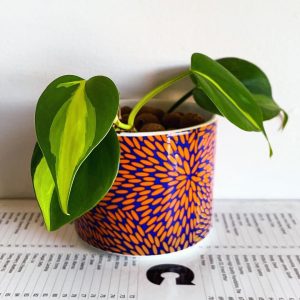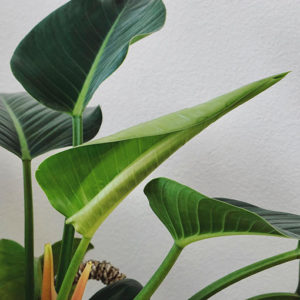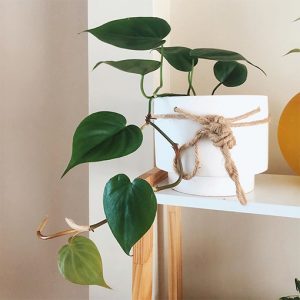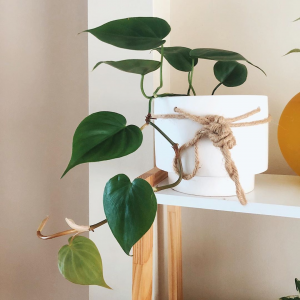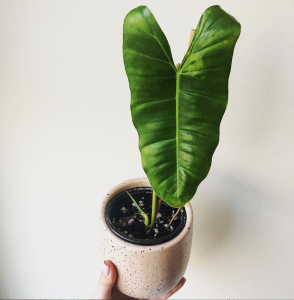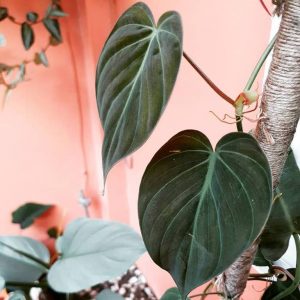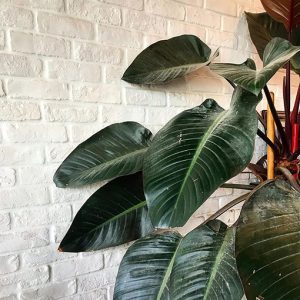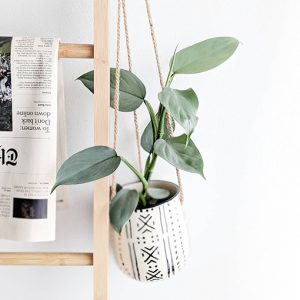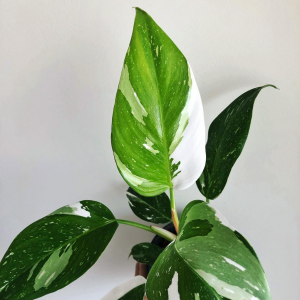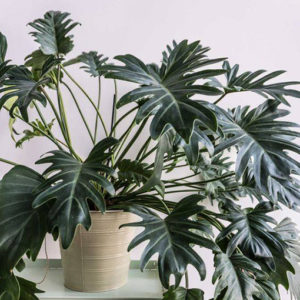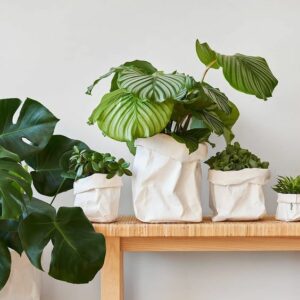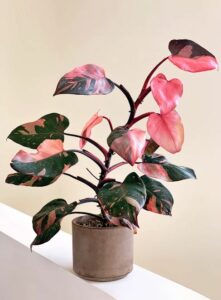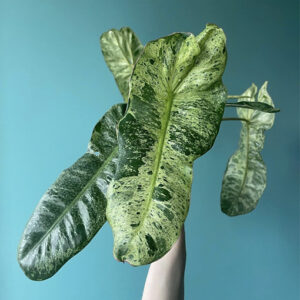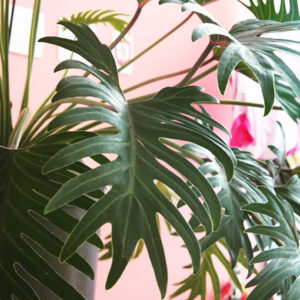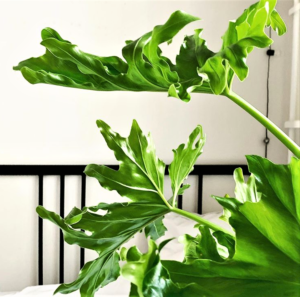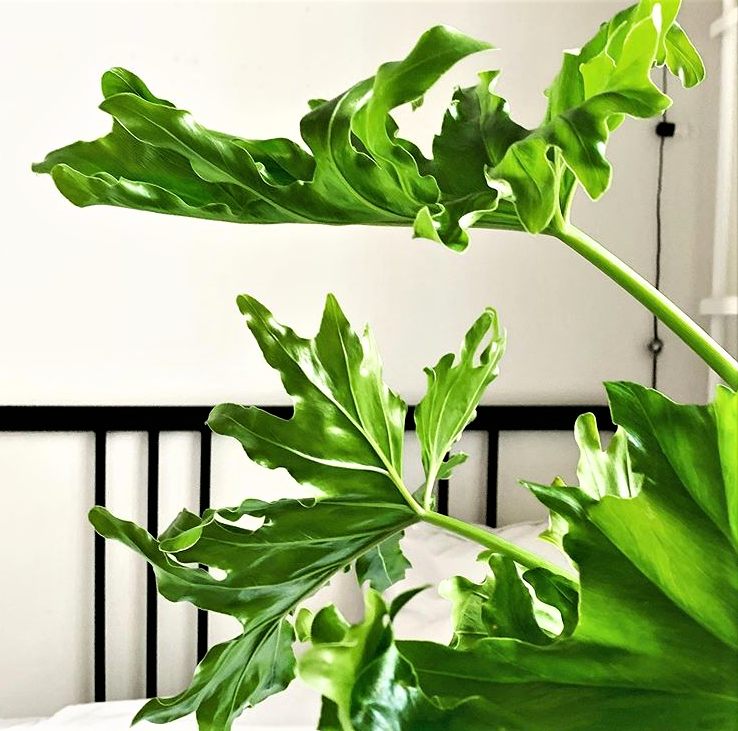
Start with Hope! The Philodendron Hope Selloum (p. bipinnatifidum) that is! A beautiful big luscious houseplant that can also be grown outdoors in shady protected spots. It is famous for its giant deeply lobed leaves that can bring the jungle!
Philodendron Bipinnatifidum – Philodendron Hope Selloum Introduction
The massive and exuberant appearance of Philodendron bipinnatifidum has attracted a lot of common names, from Lacy Tree Philodendron, Hope Philodendron, Hope Selloum, Horsehead Philodendron to Tree Philodendron. Commonly found as an epiphyte on trees of South American tropical rainforests, Hope Philodendron displays typical aroid features like large glossy green leaves, epiphytic aerial roots and spadix inflorescence that may be completely absent at times.
A mature Philodendron bipinnatifidum has woody stems that spots marks of fallen leaves as “eye-drop” leaf scars, an attractive feauture in its own right. Leaves with long petioles and large deeply lobed lamina create a nostalgia to the Jurassic era. A single leaf of the Tree Philodendron can attain a length of 1.5 meters with flowers on an inflorescence protected by a spadix.
Philodendron Bipinnatifidum – Philodendron Hope Selloum Planting
The lush and open habit of Philodendron Hope Selloum makes it perfect as a feature plant for a large room. Give it a space in the corner of your room and the Tree Philodendron will attract everyone’s attention with its bright, glossy-green foliage.
You can even have them on your balconies or house entrance, as they withstand wind quite well. Given some support with totems, you will be rewarded with an elegant, vertical Philodendron Hope Selloum. A great tropical addition to your home garden, why not allow your Tree Philodendron prop and grow up an existing large tree as it does in nature.
Philodendron Bipinnatifidum – Philodendron Hope Selloum Lighting and Position
Be it outdoors or indoor, your Philodendron bipinnatifidum prefers a bright spot with lots of indirect sunlight. They dislike, the scorching sun hitting them directly. Hope Philodendron looks for a lot of space, so place them in an open position that is well lit. Though they survive in low light conditions their leaves will be much more shiny and greener when grown under indirect sunlight. Rotate your Hope Selloum pot regularly for an even growth and dust the leaves regularly for maximum photosynthesis.
Philodendron Bipinnatifidum – Philodendron Hope Selloum Humidity
A Tree Philodendron grows at its best under high humidity, well about 60% or more but can tolerate lower humidity levels quite well. Mist them regularly or place above a pebble tray to achieve higher humidity.
Philodendron Bipinnatifidum – Philodendron Hope Selloum Soil and Fertilisation
Philodendron bipinnatifidum is a typical aroid and can show sensitivity to inappropriate soils. They are the happiest when planted in a moist, rich organic soil. Mulch the base of your Hope Selloum lightly at times, to aerate the soil to keep them moist. Regular potting soil mixed with dry sphagnum moss or normal garden compost is a great soil composition for your Hope Selloum.
Feed once a month, with a water-soluble general fertiliser diluted to ½ of the recommended strength. Avoid overfeeding, as it may lead to salt deposition in the soil and cause leaf burn. We recommend using our Plant food available here.
Philodendron Bipinnatifidum – Philodendron Hope Selloum Watering
Your Philodendron Hope Selloum will appreciate a moderate amount of watering. Yes, they like moist feet, but that doesn’t mean a soggy soil devoid of proper aeration. Water slowly and allow the soil to soak up all the nutrients. If you feel a dry top soil during a finger test, then it’s time to water your Hope Selloum. Root rot can be a common problem in overwatered Philodendron bipinnatifidum, so avoid it at all times.
Philodendron Bipinnatifidum – Philodendron Hope Selloum Propagation
You can propagate your Philodendron Hope Selloum easily by stem cuttings. Select a stem cutting with one or two emerging leaf nodes. If you plan to place them right away into potting soil, treat the base of the cutting with a regular rooting hormone. Hope Selloum stem cutting needs an organic rich potting mix that is quite moist for best success.
You may even place the cutting in a glass jar of water mixed with some rooting solution. Both the potted plant and cutting placed in water should be placed under a well lit location. Once roots are established pot your Philodendron Hope Selloum to a larger container or into the ground.
Philodendron Bipinnatifidum – Philodendron Hope Selloum Pruning and Maintenance
Pruning is a must for a well behaved Tree Philodendron. You can just trim away the old yellow leaves to expose the woody stems or remove the lower unwanted leaves. Regular pruning helps to maintain the shape and size of your Hope Selloum. It is advised to wear gloves as the plant sap of Philodendron bipinnatifidum can cause skin irritation.
A sphagnum moss totem can be used to support the actively growing Philodendron Hope Selloum, where aerial roots readily attach to the totem for moisture.
Philodendron Bipinnatifidum – Philodendron Hope Selloum Pests and Diseases
Aphids, mealybugs and spider mites are some of the common pests on Philodendron bipinnatifidum. Any insecticidal soap solution spray will keep them at bay. Be careful not to damage to the leaves as these pests are readily attracted by the plant sap.
Place your Hope Selloum pot under bright, indirect sunlight to keep those frilled leaves dry. Moisture retention invites bacterial blight of leaves, exhibited as dark green spots that spread quickly all over. Reduce fungal gnats and root rot issues in your Philodendron Hope Selloum by avoiding soggy soils and removal decaying old leaves. For more information on how to manage common plant pests head to our blog here.
Philodendron Bipinnatifidum – Philodendron Hope Selloum Toxicity
All Philodendron species are characterized by the presence of calcium oxalate crystal deposits in plant tissue. Philodendron Hope Selloum too shows toxic properties due to this reason. It is best to have your Hope Selloum pot away from kids and pets. Accidental ingestion results in, mouth pain, swelling of lips and tongue, vomiting and drooling in pets. Even when pruning your Philodendron bipinnatifidum wear gloves to protect yourself from the irritant plant sap.
Philodendron bipinnatifidum – Philodendron Hope Selloum Design Tips
Nothing says tropical jungle like big luscious leaves and few are more jungly than the Philodendron Hopes! Indoors they’ll generally remain more compact, but with a 360 degree growth habit they are popular in pot stands that help to give them some verticality, while celebrating the plant from all directions. They are also great on ledges or overhanging baths. Provide with a totem if your hoping to encourage vertical growth which will help to make it well suited to corners.
Outdoors they can get very big. Place under a tree that will protect it from direct sun or under the trees trunk so it can use it to climb.
The lush green leaves will look great against light pink, orange or terracotta but they look equally good against white, black and timbers.

